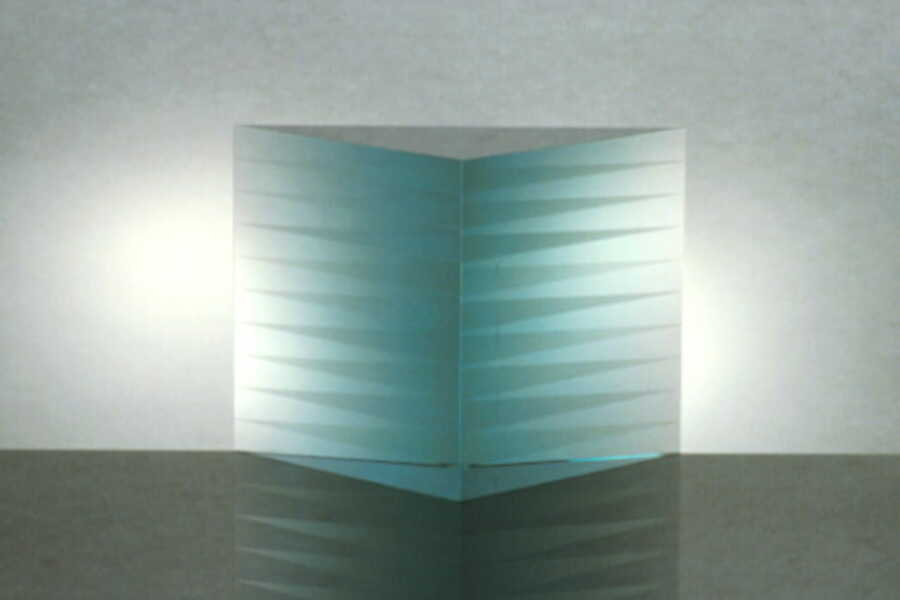Modern flat glass is green, the thicker the greener. From some manufacturers it has a slightly more bluish hue, while other glass can be slightly greyish. Looking at the colour is the only way one can distinguish glass from one source to another. Glass is seldom marked with the producer's logo. Float
glass is poured hot on a bed of liquid tin, left to float to a flat surface, hence the term float-glass. Traces of tin are left on the surface of the glass. Special tools can detect which side of the glass was on the molten metal during production, relevant information in some applications. Bulletproof and
soundproof glass consists of layers of glass and plastic foil. How flat the glass is determines what we see, as does the refractive index of a material. (Think of how a pencil in a glass of water looks as though it is bent.)
In his work Durk Valkema makes use of the fact that a layer in between the glass (foil or glue) has a different refractive index than glass.
The refractive index for air differs from that of a vacuum, water or glass. How fast the light travels through a substance also depends on the thickness of that specific body, factors that effect refraction. Refractive index, or index of refraction, can be defined as follows: light travels through space as a wave with amplitude, wavelength and speed that is dependant upon how it was emitted and the medium through which it propagates. The velocity of light within the medium where the light travels is known as index of refraction.


